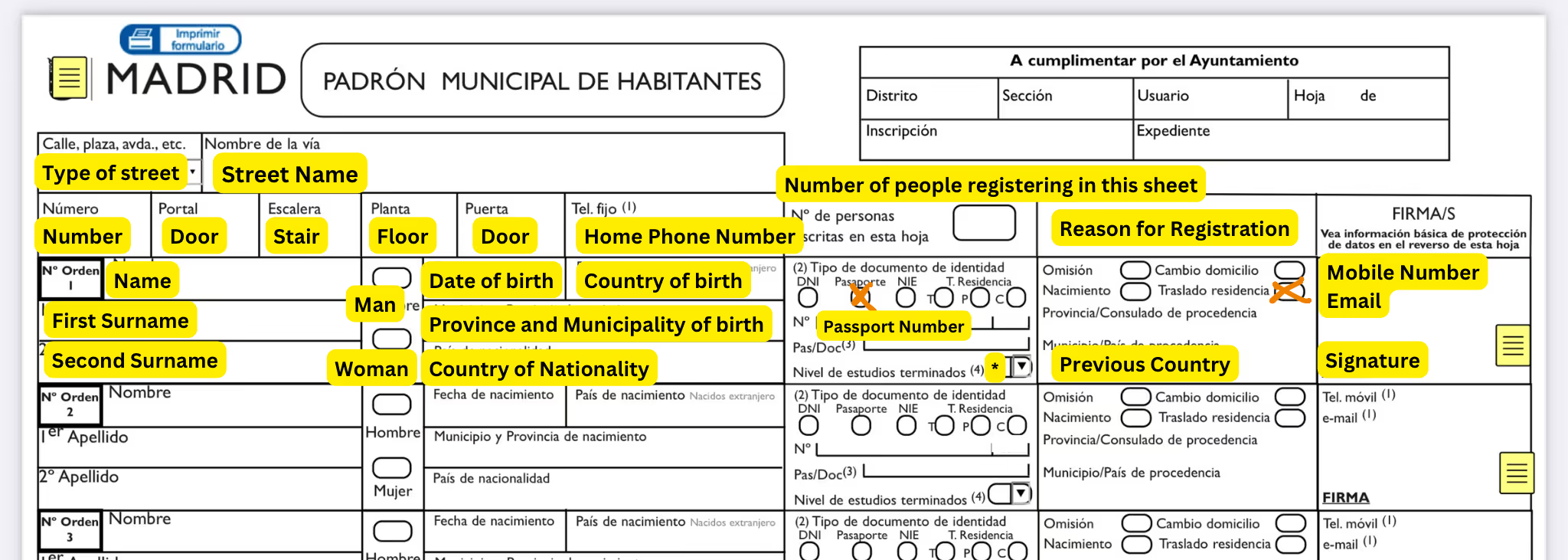
One of the many things you’ll need to do when you move to Spain, is to get Empadronado/a. But what does that mean? What is it for? Why do you need to do it? Let’s get into it.
To put it very simple, Empadronamiento is the process of registering for you local “City Hall” or “Council”. This is for your local Government Body to know you are a resident in its municipality, and get the necessary budget to provide the services needed to everyone who live in it.
The Spanish Law requires all residents (both Nationals and Expats) who live in Spain for at least 6 months to get Empadronados as as possible.
You will need to get your Certificado de Empadronamiento or padron in order to access some key services in Spain, including Public Healthcare - which is for the most part, free. Other services that can require you to have your Padrón are buying a house in Spain, renting, leasing or selling a car a Spain, register your children in a public school, vote in elections and even get married.
In short, your Padrón is the legal way in Spain to prove your residency and address.

Empadronamiento is handled separately by each locality, so the requirements may change from place to place. But normally, you will be asked for the following:
If you’re having trouble figuring out how to sort out your Padrón, or want someone to translate the forms for you, you can Sign Up to Matutto to access our Step-by-Step Guide and Translated forms.

Part of the Empadronamiento Form translated to English available on Matutto
In some municipalities, you will be able to get your Certificado de Empadronamiento on the spot. In some cases however, it may take a few days for the certificate to be issued. If that’s the case, they will issue you a volante de Empadronamiento - which is a temporary document you can hold for a few days until your certificate is issued. Note that this document is not signed by the city hall and cannot be used as a replacement for your Empadronamiento.
Normally, you can register for Empadronamiento with an appointment at your Municipality’s office, although some localities allow you to carry out this process online.
To find out the process of your Municipality, call your Local Council or Sign Up to Matutto, where you can access a step-by-step guide, and you can speak to an Advisor for help.
PS: When you go for your Empadronamiento Appointment, you may want to sharpen your Spanish (or take a Spanish Friend with you), as the likelihood of them speaking English is slim.
1) The Spanish law requires everyone who lives in Spain for 6 months (or moves to Spain with the intention of living in Spain for at least 6 months), to register with their local Municipality as soon as possible. This process is called Empadronamiento, and it’s a way for local Government Bodies to track how many people live in it.
2) You only really need your ID/Passport. Proof of address documentation and Registration Form to get Empadronado/a. This can typically be your rental agreement (which should be for at least 6 months).
3) Getting Empadronado/a will allow you to prove your Address and Residency and more easily carry out legal transactions such as: Buying a House in Spain, renting or buying a car, getting married in Spain, Voting in elections, registering your child at local public schools, and even receiving appropriate grants and subsidies by the government.
4) The Local Government uses Empadronamiento data to allocate budget per Municipality. So if 100,000 people live in a city, but only 50,000 are “registered”, the Municipality will only receive budget to serve 50,000 people. This means less money to clean the roads, less police staff, and even less doctors and nurses - which translates into longer waiting times in your local hospitals. So it’s in everyone’s interest to make sure the numbers are appropriately counted by the Municipality.
5) You can get Empadronado/a in-person at a local office, although some Municipalities may allow you to carry out the registration online.